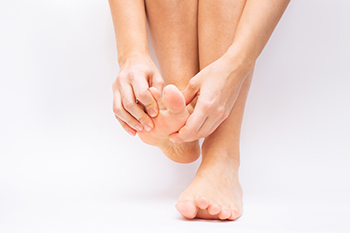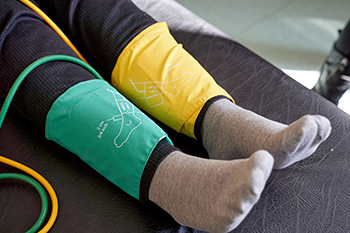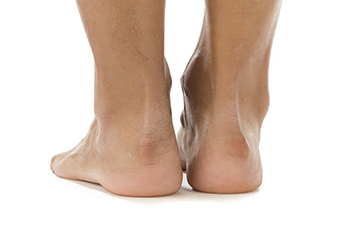Dr. Kennan T. Runte, DPM, FACFAS
Dr. Panah Nabili, DPM
Grass Valley, CA 95945
Dr. Kennan T. Runte, DPM, FACFAS
Dr. Panah Nabili, DPM

Hammertoe, a common foot deformity characterized by abnormal bending of the toe joints, can cause discomfort and limit mobility. Incorporating regular stretches into your daily routine can help alleviate tension and improve flexibility in the affected toes. One effective stretch is the toe extensor stretch, which involves gently pulling the affected toes upward and holding the position for several seconds to stretch the tendons and muscles on the top of the toes. Another beneficial stretch is the toe flexor stretch, where you interlace your fingers between the toes and gently press them together to stretch the toe joints and muscles on the bottom of the toes. Additionally, rolling a small ball or towel under the arches of your feet can help relieve tension and promote better toe alignment. By performing these stretches consistently and gently, individuals with hammertoes can enhance flexibility, reduce discomfort, and maintain better foot health overall. If you have hammertoe, and would like to know more about specific stretches to perform, it is suggested that you consult a podiatrist who can offer a tailored treatment plan.
Hammertoes can be a painful condition to live with. For more information, contact one of our podiatrists of Foothill Podiatry Clinic. Our doctors will answer any of your foot- and ankle-related questions.
Hammertoe
Hammertoe is a foot deformity that occurs due to an imbalance in the muscles, tendons, or ligaments that normally hold the toe straight. It can be caused by the type of shoes you wear, your foot structure, trauma, and certain disease processes.
Symptoms
Risk Factors
Treatment
If you have hammertoe, you should change into a more comfortable shoe that provides enough room for your toes. Exercises such as picking up marbles may strengthen and stretch your toe muscles. Nevertheless, it is important to seek assistance from a podiatrist in order to determine the severity of your hammertoe and see which treatment option will work best for you.
If you have any questions, please feel free to contact our office located in Grass Valley, CA . We offer the newest diagnostic and treatment technologies for all your foot care needs.

The Ankle-Brachial Index, or ABI, test is a diagnostic tool podiatrists use to assess peripheral arterial disease. This is a condition characterized by narrowed or blocked arteries, caused primarily by plaque buildup and which leads to poor blood flow to the legs. By measuring blood pressure at the ankle, at rest, and sometimes post-exercise, the ABI helps predict the severity of peripheral artery disease, a condition primarily caused by arterial narrowing or blockage due to plaque buildup. A normal ABI falls within the range of 1.0 to 1.4, indicating sufficient blood flow and minimal arterial obstruction, while values of 0.9 or lower suggest peripheral artery disease. Additionally, ABI values above 1.40 may also signal arterial stiffness and potential cardiovascular risks. Notably, a slight drop in ABI post-exercise further confirms the presence of peripheral artery disease. This test is instrumental not only in diagnosing lower extremity vascular issues but also in identifying individuals at heightened risk for heart attacks and strokes. Consequently, integrating ABI testing into routine podiatric assessments enables early detection and management of PAD. If you have peripheral artery disease symptoms, it is suggested that you schedule an appointment with a podiatrist for an examination and possibly ABI testing.
Peripheral artery disease can pose a serious risk to your health. It can increase the risk of stroke and heart attack. If you have symptoms of peripheral artery disease, consult with one of our podiatrists from Foothill Podiatry Clinic. Our doctors will assess your condition and provide you with quality foot and ankle treatment.
Peripheral artery disease (PAD) is when arteries are constricted due to plaque (fatty deposits) build-up. This results in less blood flow to the legs and other extremities. The main cause of PAD is atherosclerosis, in which plaque builds up in the arteries.
Symptoms
Symptoms of PAD include:
It is important to note that a majority of individuals never show any symptoms of PAD.
Diagnosis
While PAD occurs in the legs and arteries, Podiatrists can diagnose PAD. Podiatrists utilize a test called an ankle-brachial index (ABI). An ABI test compares blood pressure in your arm to you ankle to see if any abnormality occurs. Ultrasound and imaging devices may also be used.
Treatment
Fortunately, lifestyle changes such as maintaining a healthy diet, exercising, managing cholesterol and blood sugar levels, and quitting smoking, can all treat PAD. Medications that prevent clots from occurring can be prescribed. Finally, in some cases, surgery may be recommended.
If you have any questions, please feel free to contact our office located in Grass Valley, CA . We offer the newest diagnostic and treatment technologies for all your foot care needs.
Hig h heels are known for their stylish appearance, but they can lead to heel pain and foot problems, including Haglund's deformity. The design of many high-heeled shoes places increased pressure on the back of the heel, leading to friction and irritation. High heels and pumps often have rigid backs or narrow heel counters, which can contribute to rubbing against the heel. This persistent rubbing can cause the formation of a bony enlargement at the back of the heel, known as Haglund’s deformity. Haglund’s is also known as pump bump because pumps so often contribute to the development of the condition. Choosing shoes with softer, more accommodating heel structures and avoiding styles that excessively press on the back of the heel can play a pivotal role in preventing or minimizing the risk of developing this condition. If you are experiencing heel pain or Haglund’s deformity, it is suggested that you visit a podiatrist, who can help you find the cause of your pain, and guide you toward selecting appropriate shoes.
h heels are known for their stylish appearance, but they can lead to heel pain and foot problems, including Haglund's deformity. The design of many high-heeled shoes places increased pressure on the back of the heel, leading to friction and irritation. High heels and pumps often have rigid backs or narrow heel counters, which can contribute to rubbing against the heel. This persistent rubbing can cause the formation of a bony enlargement at the back of the heel, known as Haglund’s deformity. Haglund’s is also known as pump bump because pumps so often contribute to the development of the condition. Choosing shoes with softer, more accommodating heel structures and avoiding styles that excessively press on the back of the heel can play a pivotal role in preventing or minimizing the risk of developing this condition. If you are experiencing heel pain or Haglund’s deformity, it is suggested that you visit a podiatrist, who can help you find the cause of your pain, and guide you toward selecting appropriate shoes.
Many people suffer from bouts of heel pain. For more information, contact one of our podiatrists of Foothill Podiatry Clinic. Our doctors can provide the care you need to keep you pain-free and on your feet.
Causes of Heel Pain
Heel pain is often associated with plantar fasciitis. The plantar fascia is a band of tissues that extends along the bottom of the foot. A rip or tear in this ligament can cause inflammation of the tissue.
Achilles tendonitis is another cause of heel pain. Inflammation of the Achilles tendon will cause pain from fractures and muscle tearing. Lack of flexibility is also another symptom.
Heel spurs are another cause of pain. When the tissues of the plantar fascia undergo a great deal of stress, it can lead to ligament separation from the heel bone, causing heel spurs.
Why Might Heel Pain Occur?
Treatments
Heel pain should be treated as soon as possible for immediate results. Keeping your feet in a stress-free environment will help. If you suffer from Achilles tendonitis or plantar fasciitis, applying ice will reduce the swelling. Stretching before an exercise like running will help the muscles. Using all these tips will help make heel pain a condition of the past.
If you have any questions please contact our office located in Grass Valley, CA . We offer the newest diagnostic and treatment technologies for all your foot and ankle needs.

Pregnancy, a momentous journey marked by various changes, also brings about alterations in the body, including swelling in the feet. This phenomenon, known as edema, is a common occurrence during pregnancy due to increased blood volume and pressure on the pelvic veins. The growing uterus exerts pressure on the vena cava, which hinders blood flow from the lower extremities and leads to fluid retention. Hormonal changes further contribute to this swelling by causing the body to retain more water. To find relief, elevation of the feet whenever possible helps reduce fluid buildup. Supportive footwear and avoiding prolonged periods of standing can alleviate the strain on the feet. Staying hydrated, incorporating gentle exercises like walking, and incorporating a low-sodium diet can also aid in managing pregnancy-related foot swelling. If you have foot swelling or pain in any area of your foot during your pregnancy, it is suggested that you visit a podiatrist who can help you to find additional relief measures.
Pregnant women with swollen feet can be treated with a variety of different methods that are readily available. For more information about other cures for swollen feet during pregnancy, consult with one of our podiatrists from Foothill Podiatry Clinic. Our doctors will attend to all of your foot and ankle needs.
What Foot Problems Can Arise During Pregnancy?
One problem that can occur is overpronation, which occurs when the arch of the foot flattens and tends to roll inward. This can cause pain and discomfort in your heels while you’re walking or even just standing up, trying to support your baby.
Another problem is edema, or swelling in the extremities. This often affects the feet during pregnancy but tends to occur in the later stages.
How Can I Keep My Feet Healthy During Pregnancy?
If you have any questions please feel free to contact our office located in Grass Valley, CA . We offer the newest diagnostic and treatment technologies for all your foot and ankle needs.